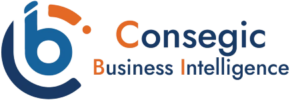In an epoch marked by the rapid march of technological progress, the infusion of technology into contemporary classrooms has evolved into an urgent and compelling demand. The traditional educational model, entrenched in reliance upon textbooks and conventional teaching tools, increasingly falls short in its ability to adequately equip students to confront the multifaceted challenges of the 21st century. This essay delves into the compelling reasons underpinning the necessity for mandating technology in modern educational settings, emphasizing its potential to not only reshape the art of teaching and learning but also to invigorate student engagement and prepare learners for an ever-evolving digital realm.
Reasons why technology should be mandatory in modern classrooms?
Bridge Educational Disparities
A paramount motive behind enforcing the integration of technology in modern classrooms rests in its power to bridge educational disparities. Technology extends uniform access to educational resources and opportunities to students, irrespective of their geographical location or socioeconomic backgrounds. Through the medium of digital tools and online resources, the educational playing field is leveled, thereby allowing students from diverse backgrounds, be they urban or rural, affluent or underprivileged—to access identical high-quality educational content.
Enrich Educational Prospects
Technology presents a vast spectrum of diverse educational prospects, each capable of catering to individual learning styles and preferences. For example, interactive e-learning modules, multimedia presentations, and virtual simulations can make even the most intricate concepts comprehensible and captivating for students. The ability to customize teaching methods to cater to different learning needs can significantly benefit students with varying cognitive abilities and preferences.
Amplify Student Engagement
At the heart of effective learning lies the concept of student engagement. Technology in the classroom possesses the potential to transform the learning experience into an interactive and enjoyable journey. Interactive whiteboards, educational applications, and gamified lessons have the power to transmute passive listeners into active participants. Engaged students are not only more effective in absorbing information but also exhibit an enthusiasm for learning that extends far beyond the confines of the classroom.
Personalize Learning
Technology allows for the creation of personalized learning experiences. Adaptive learning platforms and data analytics can monitor each student’s progress and customize content to align with their individual needs and pace. This personalized approach to education helps struggling students catch up while allowing advanced learners to progress at an accelerated rate, ensuring that no student is left behind.
Access to Abundant Educational Resources
The internet is a treasure trove of educational resources. Technology empowers both students and educators to access a wide array of materials, including educational websites, online libraries, multimedia content, and research databases. This access not only enriches the curriculum but also encourages students to explore and delve deeper into subjects that pique their interest. For those pursuing advanced degrees, it provides a wealth of research and MBA Master Thesis Topics to explore and delve into.
Promote Environmental Sustainability
The infusion of technology into education contributes to environmental sustainability. Digital textbooks, online assignments, and e-learning platforms substantially reduce the demand for paper and other physical resources, thereby lessening the environmental impact of education.
Challenges and Considerations
Despite the myriad benefits of integrating technology into modern classrooms, it is imperative to recognize and address potential challenges. These include concerns related to the digital divide, privacy issues, and the necessity for comprehensive teacher training. These challenges demand thoughtful consideration and management to ensure that the full potential benefits of technology can be realized.
Which varieties of contemporary technology are suitable for classroom use?
The process of selecting contemporary technology for the classroom should harmonize with educational objectives, enrich the learning encounter, and deliver tangible advantages to both educators and learners. Below are various forms of modern technology that can be seamlessly integrated into educational settings:
- Interactive Whiteboards: These innovative interactive whiteboards, like SMART Boards, empower instructors to deliver lessons in an intriguing and participatory manner. They facilitate touch-screen interaction, digital pen utilization, and integration with multimedia elements, infusing dynamism into lessons.
- Computers and Laptops: Providing students with access to computers and laptops equips them to engage in research, complete assignments, and acquire vital digital skills. These devices also enable access to online educational resources and software.
- Tablets and Mobile Devices: Tablets such as iPads and Android devices offer versatility and mobility. They are ideal for running educational apps, reading e-books, and engaging in interactive learning activities. Their user-friendly touch-screen interface captivates students.
- Educational Software and Apps: The market boasts an extensive array of educational software and apps tailored to diverse subjects and age groups. These tools can infuse interactivity, adaptability, and fun into the learning process.
- Online Learning Platforms: Learning management systems (LMS) like Google Classroom, Moodle, and Canvas function as centralized hubs for assignments, discussions, and collaborative activities. They also streamline communication between educators and students.
- Virtual Reality (VR) and Augmented Reality (AR): These cutting-edge technologies transport students to alternate environments and deliver immersive experiences related to the curriculum. Examples include virtual tours of historical sites or AR applications that simplify complex scientific concepts.
- Video Conferencing Tools: Tools such as Zoom, Microsoft Teams, and Google Meet have become indispensable for remote or blended learning scenarios. They facilitate real-time online classes, discussions, and virtual meetings.
- 3D Printers: Within STEM subjects (science, technology, engineering, and mathematics), 3D printers bring abstract concepts to life by fabricating tangible prototypes. They encourage students to design and produce objects, fostering problem-solving and creative thinking abilities.
- Document Cameras: Devices like the Elmo document camera serve as valuable tools for projecting and sharing physical documents, textbooks, or students’ work on screens. This promotes engagement and collaboration within the classroom.
- Online Simulations and Virtual Labs: In the fields of science and mathematics, online simulations and virtual labs facilitate student experimentation and exploration of concepts that may be challenging to replicate in a traditional classroom.
- Audiovisual Equipment: High-quality projectors, audio systems, and smart displays enhance the presentation of educational content, ensuring students have clear visual and auditory access.
- Cloud Computing: The utilization of cloud-based tools and storage solutions, such as Google Drive and OneDrive, fosters effortless collaboration on documents, enables file access across multiple devices, and supports seamless resource sharing.
- Artificial Intelligence (AI): AI-driven educational tools provide personalized learning experiences by adapting content and assignments to cater to individual student needs and progress.
- Online Resources and e-Books: Access to digital libraries, educational websites, and e-books endows students with a wealth of information and resources, thereby reducing dependence on physical textbooks.
- Robotics and Coding Kits: These kits furnish students with invaluable programming skills and problem-solving capabilities. Robotics activities also involve students in hands-on learning experiences.
- Biometric Devices: Certain educational institutions implement biometric devices to track attendance, manage library access, or facilitate meal plans, thereby enhancing operational efficiency and security.
In Conclusion
When making the right technological choices, it’s crucial to consider variables such as the age group, curriculum, available resources, and specific educational goals. An equally critical aspect is ensuring that educators receive thorough training to seamlessly incorporate these technologies into their teaching methods, while also guaranteeing that students have straightforward access to the necessary tools and materials. The primary aim is to harness technology for the progression of education, the amplification of student involvement, and the preparation of students for the digital era.
Additionally, technology assumes a significant role in enriching students’ lives by affording them a plethora of possibilities. For example, when students require support with their writing projects, they can readily explore online platforms such as Affordable Dissertation Writing Services to accomplish their assignments. These platforms offer professional assistance, making it easier for students to achieve their academic objectives.




















